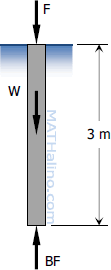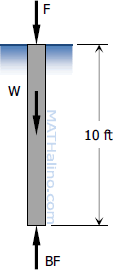Stability of Floating Bodies
Any floating body is subjected by two opposing vertical forces. One is the body's weight W which is downward, and the other is the buoyant force BF which is upward. The weight is acting at the center of gravity G and the buoyant force is acting at the center of buoyancy BO. W and BF are always equal and if these forces are collinear, the body will be in upright position as shown below.
- Read more about Stability of Floating Bodies
- Log in to post comments




